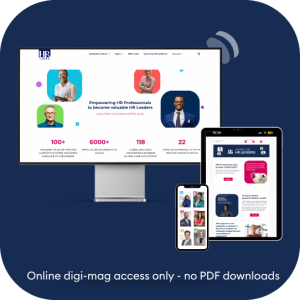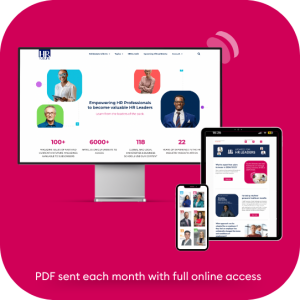Expanding your leadership team can be a challenge. Fortunately, headhunting services offer a strategic approach. These experts use their networks and industry insights to find top-notch executives for your organization.
By ensuring the right cultural fit and skill alignment, they simplify the recruitment process while maintaining the utmost confidentiality.
This guide will show how headhunting services can significantly enhance your leadership recruitment efforts.
What Is the Role of Headhunters in Leadership Recruitment?
Headhunters from HR agencies like S&A Global Force are instrumental in sourcing leaders for high-level positions. Leveraging their vast networks and deep industry insights, they identify candidates who possess the necessary skills and experience to fulfill organizational requirements.
They excel at engaging passive candidates — those not actively seeking new opportunities but possessing the desired qualifications.
Furthermore, headhunters conduct comprehensive assessments to determine if candidates meet both technical and cultural criteria. Some of these assessments include:
- structured interviews
- skills evaluations
- cultural fit assessments
Maintaining confidentiality throughout the recruitment process is a priority for headhunters. They safeguard sensitive information concerning both the hiring organization and potential prospects. This discretion is vital when recruiting influential leaders whose current employment status must remain confidential until an offer is finalized.
Leveraging Networks and Industry Knowledge
Headhunters leverage their extensive networks and deep industry knowledge to enhance the recruitment of leaders. By connecting with a diverse range of professionals, they tap into talent pools that are typically difficult to reach.
This proficiency enables them to identify candidates who align not only with the technical demands but also with the cultural values of a company.
Furthermore, their keen understanding of market trends ensures they pursue leaders equipped with the necessary skills for particular needs, whether it’s:
- driving digital transformation in technology
- handling regulatory issues in healthcare
- addressing unique industry challenges
Through their strategic approach, they build stronger leadership teams by bringing in individuals who can contribute significantly to the organization.
Ensuring Cultural Fit and Skill Match
Identifying leaders who align with a company’s ethos and possess the necessary expertise is essential. To achieve this, headhunters utilize comprehensive evaluation methods. They employ structured interviews alongside psychometric testing to gain a deeper understanding of potential candidates.
By grasping what an organization prioritizes, they identify individuals whose personal values resonate with the company’s culture.
In addition to cultural alignment, headhunters emphasize skill matching through in-depth assessments tailored for specific leadership roles. These evaluations confirm that candidates possess both the required technical proficiency and crucial soft skills.
For example, leaders often need:
- strategic insight
- emotional intelligence
- effective communication skills
- problem-solving abilities
- decision-making capabilities
This meticulous strategy enables companies to recruit leaders who not only excel in their positions but also integrate smoothly into the corporate environment. Such harmony enhances long-term employee retention and fosters continuous business development.
How Do Headhunting Services Expand Your Leadership Team?
Headhunting services play a crucial role in expanding your leadership team by linking you to a diverse array of talent, including individuals not actively hunting for new positions but who might be intrigued if approached thoughtfully.
These services leverage professional networks and industry expertise to identify top-tier candidates for senior roles, allowing organizations access to skilled professionals they might otherwise miss.
Key advantages of headhunting services include:
- the ability to attract passive candidates
- expertise in engaging individuals who are typically employed but may consider new opportunities with the right proposition
- access to a broader pool of potential leaders beyond those who are actively job-seeking
- an emphasis on confidentiality during recruitment
- strategic support in building robust management teams that align with growth objectives and strategic vision
Access to a Wider Talent Pool
Headhunting services can significantly boost your leadership team by expanding the range of potential candidates. Unlike standard recruitment techniques, they tap into networks that reach individuals who aren’t actively job hunting. This approach allows organizations to identify top-tier professionals who might otherwise remain unnoticed.
With their extensive industry expertise and connections, headhunters present opportunities to a diverse array of candidates, enhancing the likelihood of finding the perfect fit for senior positions.
Consequently, companies have the chance to evaluate individuals with specialized skills and distinct experiences, elevating the quality of their leadership teams.
Attracting Passive Candidates
Headhunting services are experts at identifying passive candidates — those who aren’t actively seeking new jobs but possess the skills necessary for senior positions. These individuals often occupy significant roles and remain unnoticed by traditional recruitment methods.
Leveraging extensive networks and in-depth industry knowledge, headhunters can locate and engage with them, presenting opportunities that align with their career aspirations.
Approaching passive candidates involves a strategic method. Headhunters emphasize the distinct benefits of a role, such as:
- leadership development
- alignment with personal values
- promising organizational potential
This tailored outreach helps candidates recognize the perks of considering a new opportunity, even if they aren’t currently on the lookout.
Maintaining Confidentiality
Confidentiality is crucial in headhunting, particularly for senior roles. These services ensure that sensitive information about both clients and candidates remains secure throughout the recruitment process.
Keeping such details under wraps is vital to protect the current employment of prospective leaders until they decide to accept new positions. By maintaining discretion, headhunters minimize any disruption to existing business operations or effects on candidates’ present jobs.
This approach fosters trust among all parties involved, facilitating a smooth transition during leadership appointments.
What Are the Advantages of Using Headhunting Services?
Headhunting services bring distinct advantages to organizations aiming to bolster their leadership teams. These specialized recruitment solutions are dedicated to identifying and attracting elite talent, ensuring businesses secure top-notch candidates for senior positions.
One significant benefit is the boost in recruitment efficiency. Headhunters leverage their professional networks and industry know-how to swiftly locate individuals who meet specific requirements, expediting the hiring process.
Additionally, headhunting services shine at minimizing hiring time. Their expertise in sourcing and evaluating candidates allows them to deliver a shortlist of strong prospects more rapidly than conventional methods. In competitive job markets, this speed is vital as delays may result in losing prime candidates to rival offers.
Furthermore, these services enhance the overall talent acquisition process by broadening access to potential leaders. Headhunters reach out to passive candidates — those not actively seeking new opportunities but open to exciting challenges — extending an organization’s reach beyond just active job seekers.
Improving Recruitment Efficiency
Enhancing recruitment efficiency is a key advantage of utilizing headhunting services.
With their extensive networks and industry expertise, headhunters streamline the hiring process. They swiftly identify candidates who align with the specific requirements for leadership positions, significantly reducing search time and enabling companies to fill vital roles more quickly.
Moreover, headhunters enhance recruitment efforts by focusing on passive candidates — those who aren’t actively job hunting but are receptive to attractive opportunities. This approach broadens the talent pool beyond individuals currently seeking employment.
Consequently, businesses not only improve efficiency but also acquire high-caliber leaders who align with their strategic objectives.
Reducing Hiring Time
One major advantage of utilizing headhunting services is the significant reduction in hiring time, which is especially beneficial for companies aiming to swiftly fill leadership positions. These professionals leverage their extensive networks and industry expertise to pinpoint candidates who perfectly align with specific requirements.
This targeted approach streamlines the search process, enabling businesses to quickly secure top-tier talent for senior roles.
In highly competitive markets, any delay might result in losing exceptional candidates to competitors. Yet, headhunters provide a curated list of qualified individuals, assisting companies in making rapid and informed decisions. This not only accelerates the hiring process but also minimizes expenses associated with unfilled positions and drawn-out recruitment periods.
Engaging headhunting services enhances hiring efficiency by optimizing both candidate sourcing and assessment. Quick decision-making allows organizations to remain agile and responsive amidst rapidly evolving job markets.
Enhancing Talent Acquisition Process
Engaging headhunting services can transform the way businesses discover fresh talent. They open doors to a wider range of candidates by reaching out to both active job seekers and those currently settled in their positions.
This approach allows companies to connect with top-tier professionals perfectly suited for leadership roles.
Utilizing clever recruitment tactics, headhunters draw on their industry expertise and extensive networks to swiftly identify the most suitable candidates. By integrating data-driven techniques with comprehensive candidate assessments, they enhance the quality of hires.
Moreover, headhunters seek out leaders who prioritize innovation and adaptability, strengthening an organization’s ability to thrive in dynamic environments. This focus fosters enduring growth.
What Are the Steps in the Headhunting Process?
The headhunting process is a systematic approach to identifying and recruiting exceptional talent for leadership positions. Here’s a glimpse into how it unfolds:
- Recognizing leadership needs: It all begins when management acknowledges the necessity of filling a new role, pinpointing the skills, expertise, and characteristics essential for success.
- Clarifying roles and responsibilities: Crafting a precise job description aids both recruiters and candidates in grasping the role’s duties and objectives.
- Finding candidates through networks: Recruiters tap into their professional circles to discreetly locate potential candidates, often targeting those not actively pursuing new opportunities but who are well-qualified.
- Contacting potential candidates: Upon identifying suitable candidates, recruiters directly engage with them to gauge interest while maintaining confidentiality.
- Classifying candidates as passive or active: Recruiters assess whether individuals are open to new opportunities or actively seeking employment.
- Screening and shortlisting: The candidate pool undergoes rigorous evaluation based on competencies, experience, and alignment with the organizational culture.
- Interviewing and background checks: Selected candidates participate in structured interviews followed by comprehensive background checks to verify credentials and suitability.
- Facilitating discussions and negotiations: Finally, recruiters assist in negotiations between the company and top contenders regarding employment terms before offers are extended.
This structured method ensures that companies successfully recruit leaders who not only meet technical requirements but also harmonize with the organization’s culture, effectively driving strategic goals forward.
How Can Companies Use Headhunting Services?
To effectively utilize headhunting services for assembling a leadership team, businesses should begin by identifying their specific leadership requirements. This involves determining the particular skills, attributes, and experiences needed for new roles.
Collaboration on job descriptions is the next crucial step. Companies should partner with headhunters to craft comprehensive descriptions that detail responsibilities, qualifications, and expectations.
Well-constructed job profiles not only draw candidates who meet technical criteria but also those who align with the company culture.
Maintaining open communication throughout the process is essential. Regular updates between companies and headhunters allow for adjustments in recruitment strategies in response to evolving needs or feedback from interactions with candidates.
Defining Leadership Needs
Identifying what is needed in leadership roles is vital for making the most of headhunting services. This process involves outlining the specific skills, experiences, and qualities that new leaders should possess.
Businesses should prioritize key characteristics such as:
- effective communication
- strategic insight
- emotional intelligence
- flexibility
By establishing clear criteria, companies direct headhunters to locate candidates who not only meet technical qualifications but also mesh well with the company culture. This precision streamlines recruitment procedures and enhances overall talent acquisition efforts.
Collaborating on Job Descriptions
Working together on job descriptions is vital for maximizing the effectiveness of headhunting services. This involves partnering closely with recruiters to develop detailed descriptions that clearly communicate the responsibilities, required qualifications, and leadership expectations for the roles.
To accomplish this, businesses should focus on several crucial aspects:
- Role clarity: Define the duties and strategic importance of the position within the organization.
- Qualifications: Outline both essential skills and desirable traits such as emotional intelligence or a strategic mindset.
- Cultural fit: Emphasize key elements of company culture that are critical for success in the position.
Maintaining Open Communication
Effective communication is vital when engaging with headhunting services, as it fosters alignment between companies and recruiters for smoother recruitment coordination. Consistent updates and transparent discussions help refine strategies and adjust to evolving requirements or candidate feedback.
Keeping in touch with candidates not only builds trust but also enhances their experience. Keeping them informed about the progress reflects professionalism and increases the likelihood of attracting top-tier talent.
This ongoing dialogue also maintains relationships with promising individuals, creating a future pool of potential hires.
The Bottom Line
Effectively using headhunting services can transform your leadership hiring approach. By defining your needs, working closely on job descriptions, and maintaining open lines of communication, your organization can attract the right talent.
With their deep networks and expertise, headhunters boost recruitment efficiency and reduce hiring times. This collaboration leads to a stronger, more cohesive leadership team that aligns with your company’s vision.
Guest writer
























